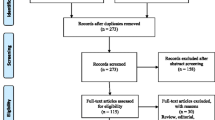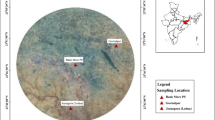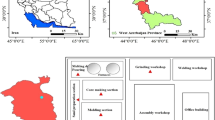Abstract
Inhalation of silica (SiO2) in occupational exposures can cause pulmonary fibrosis (silicosis), lung function deficits, pulmonary inflammation, and lung cancer. Current risk assessment models, however, cannot fully explain the magnitude of silica-induced pulmonary disease risk. The purpose of this study was to assess human health risk exposed to airborne silica dust in Taiwan ceramics manufacturing. We conducted measurements to characterize workplace-specific airborne silica dust in tile and commodity ceramic factories and used physiologically based alveolar exposure model to estimate exposure dose. We constructed dose–response models for describing relationships between exposure dose and inflammatory responses, by which health risks among workers can be assessed. We found that silica contents were 0.22–33.04 % with mean concentration ranges of 0.11–5.48 and 0.46–1763.30 μg m−3, respectively, in commodity and tile ceramic factories. We showed that granulation workers in tile ceramic factory had the highest total SiO2 lung burden (∼1000 mg) with cumulative SiO2 lung burden of ∼4 × 104 mg-year. The threshold estimates with an effect on human lung inflammation and fibrosis are 407.31 ± 277.10 (mean ± sd) and 505.91 ± 231.69 mg, respectively. For granulation workers, long-term exposure to airborne silica dust for 30–45 years was likely to pose severe adverse health risks of inflammation and fibrosis. We provide integrated assessment algorithms required to implement the analyses and maintain resulting concentration of silica dust at safety threshold level in the hope that they will stimulate further analyses and interpretation. We suggest that decision-makers take action to implement platforms for effective risk management to prevent the related long-term occupational disease in ceramics manufacturing.







Similar content being viewed by others
References
Amabile JC, Leuraud K, Vacquier B, Caër-Lorho S, Acker A, Laurier D (2009) Multifactorial study of the risk of lung cancer among French uranium miners: radon, smoking and silicosis. Health Phys 97:613–621
Başaran N, Shubair M, Ündeğer Ü, Canpınar H, Kars A (2002) Alterations in immune parameters in foundry and pottery workers. Toxicology 178:81–88
Brown TP, Rushton L (2005) Mortality in the UK industrial silica sand industry: 1. Assessment of exposure to respirable crystalline silica. Occup Environ Med 62:442–445
Calvert GM, Luckhaupt S, Lee SJ, Cress R, Schumacher P, Shen R, Tak S, Deapen D (2012) Lung cancer risk among construction workers in California, 1988-2007. Am J Ind Med 55:412–422
Calvert GM, Rice FL, Boiano JM, Sheehy JW, Sanderson WT (2003) Occupational silica exposure and risk of various diseases: an analysis using death certificates from 27 states of the United States. Occup Environ Med 60:122–129
Castranova V, Vallyathan V (2000) Silicosis and coal workers’ pneumoconiosis. Environ Health Perspect 108:675–684
Chen CJ (2002) The study of health effect among ceramics manufacturing workers. Report No. IOSH90-M345. Institute of Occupational Safety and Health, Taiwan (Taiwan IOSH). (in Chinese)
Chen W, Hnizdo E, Chen JQ, Attfield MD, Gao P, Hearl F, Lu J, Wallace WE (2005) Risk of silicosis in cohorts of Chinese tin and tungsten miners, and pottery workers (I): an epidemiological study. Am J Ind Med 48:1–9
Chen W, Liu Y, Wang H, Hnizdo E, Sun Y, Su L, Zhang X, Weng S, Bochmann F, Hearl FJ, Chen J, Wu T (2012) Long-term exposure to silica dust and risk of total and cause-specific mortality in Chinese workers: a cohort study. PLoS Med 9, e1001206
Chen W, Zhuang Z, Attfield MD, Chen BT, Gao P, Harrison JC, Fu C, Chen JQ, Wallace WE (2001a) Exposure to silica and silicosis among tin miners in China: exposure-response analyses and risk assessment. Occup Environ Med 58:31–37
Chen YH, Wu TN, Liou SH (2001b) Obstructive pulmonary function defects among Taiwanese firebrick workers in a 2-year follow-up study. J Occup Environ Med 43:969–975
Cherry NM, Burgess GL, Turner S, McDonald JC (1998) Crystalline silica and risk of lung cancer in the potteries. Occup Environ Med 55:779–785
Cox LAT Jr (2011) An exposure-response threshold for lung diseases and lung cancer caused by crystalline silica. Risk Anal 31:1543–1560
Dostert C, Pétrilli V, van Bruggen R, Steele C, Mossman BT, Tschopp J (2008) Innate immune activation through Nalp3 inflammasome sensing of asbestos and silica. Science 320:674–677
Ehrlich RI, Myers JE, te Water Naude JM, Thompson ML, Churchyard GJ (2011) Lung function loss in relation to silica dust exposure in South African gold miners. Occup Environ Med 68:96–101
Fubini B, Hubbard A (2003) Reactive oxygen species (ROS) and reactive nitrogen species (RNS) generation by silica in inflammation and fibrosis. Free Radic Biol Med 24:1507–1516
Graham WGB, Costello J, Vacek PM (2004) Vermont granite mortality study: an update with an emphasis on lung cancer. J Occup Environ Med 46:459–466
Gaylor DW (1989) Quantitative risk analysis for quantal reproductive and developmental effects. Environ Health Perspect 79:243–246
Hinds WC (1999) Aerosol technology: properties, behavior and measurement of airborne particles, 2nd edn. John Wiley & Sons Inc, New York
Hnizdo E, Murray J (1998) Risk of pulmonary tuberculosis relative to silicosis and exposure to silica dust in South African gold miners. Occup Environ Med 55:496–502
International Commission Radiological Protection (ICRP) (1994) Human respiratory tract model for radiological protection: a report of a task group of the International Commission on Radiological Protection. ICRP Publication 24, Pergamon, Oxford
Jutzi P, Schubert U (2003) Silicon chemistry: from the atom to extended systems. Wiley-VCH GmbH & Co, KGaA, Weinheim
Kachuri L, Villeneuve PJ, Parent ME, Johnson KC, Harris SA, the Canadian Cancer Registries Epidemiology Group (2014) Occupational exposure to crystalline silica and the risk of lung cancer in Canadian men. Int J Cancer 135:138–148
Kuempel ED, O’Flaherty EJ, Stayner LT, Smith RJ, Green FH, Vallyathan V (2001a) A biomathematical model of particle clearance and retention in the lungs of coal miners: I. Model development. Regul Toxicol Pharmacol 34:69–87
Kuempel ED, Tran CL, Smith RJ, Bailer AJ (2001b) A biomathematical model of particle clearance and retention in the lungs of coal miners: II. Evaluation of variability and uncertainty. Regul Toxicol Pharmacol 34:88–101
Kuroda E, Ishii KJ, Uematsu S, Ohata K, Coban C, Akira S, Aritake K, Urade Y, Morimoto Y (2011) Silica crystals and aluminum salts regulate the production of prostaglandin in macrophages via NALP3 inflammasome-independent mechanisms. Immunity 34:514–526
Le Jeune I, Gribbin J, West J, Smith C, Cullinan P, Hubbard R (2007) The incidence of cancer in patients with idiopathic pulmonary fibrosis and sarcoidosis in the UK. Resp Med 101:2534–2540
Lin LH, Su YC, Wang JY, Yeh WY (2003) A study on dust exposure in the ceramics manufacturing environment. IOSH 11:237–249, in Chinese
Lin W, Huang YW, Zhou XD, Ma Y (2006) In vitro toxicity of silica nanoparticles in human lung cancer cells. Toxicol Appl Pharmacol 217:252–259
Lu S, Duffin R, Poland C, Daly P, Murphy F, Drost E, Macnee W, Stone V, Donaldson K (2009) Efficacy of simple short-term in vitro assays for predicting the potential of metal oxide nanoparticles to cause pulmonary inflammation. Environ Health Perspect 117:241–247
Meijers JM, Swaen GM, Slangen JJ (1996) Mortality and lung cancer in ceramic workers in the Netherlands: preliminary results. Am J Ind Med 30:26–30
Miller BG, MacCalman L (2010) Cause-specific mortality in British coal workers and exposure to respirable dust and quartz. Occup Environ Med 67:270–276
Ministry of Health and Welfare (MOHW, Taiwan) (2007) Compilation of exposure factors, DOH96-HP-1801. (in Chinese)
Ministry of Health and Welfare (MOHW, Taiwan) (2011) Causes of death analysis for New Taipei City. (in Chinese)
Ministry of Labor, Executive Yuan, Taiwan (2012) http://www.mol.gov.tw/. Accessed 5 January 2014.
Möhner M, Kersten N, Gellissen J (2013) Chronic obstructive pulmonary disease and longitudinal changes in pulmonary function due to occupational exposure to respirable quartz. Occup Environ Med 70:9–14
Morfeld P, Mundt KA, Taeger D, Guldner K, Steinig O, Miller BG (2013) Threshold value estimation for respirable quartz dust exposure and silicosis incidence among workers in the German porcelain industry. J Occup Environ Med 55:1027–1034
Mwaiselage J, Bråtveit M, Moen B, Mashalla Y (2004) Cement dust exposure and ventilatory function impairment: an exposure-response study. J Occup Environ Med 46:658–667
Nabeshi H, Yoshikawa T, Matsuyama K, Nakazato Y, Arimori A, Isobe M, Tochigi S, Kondoh S, Hirai T, Akase T, Yamashita T, Yamashita K, Yoshida T, Nagano K, Abe Y, Yoshioka Y, Kamada H, Imazawa T, Itoh N, Tsunoda S, Tsutsumi Y (2010) Size-dependent cytotoxic effects of amorphous silica nanoparticles on Langerhans cells. Pharmazie 65:199–201
Napierska D, Thomassen LC, Lison D, Martens JA, Hoet PH (2010) The nanosilica hazard: another variable entity. Part Fibre Toxicol 7:39
Napierska D, Thomassen LC, Rabolli V, Lison D, Gonzalez L, Kirsch-Volders M, Marten JA, Hoet PH (2009) Size-dependent cytotoxicity of monodisperse silica nanoparticles in human endothelial cells. Small 5:846–853
Office of Environmental Health Hazard Assessment (OEHHA) (2005) Silica (crystalline, respirable), CAS registry number: 7631-86-9
Parks CG, Cooper GS, Nylander-French LA, Sanderson WT, Dement JM, Cohen PL, Dooley MA, Treadwell EL, St Clair EW, Gilkeson GS, Hoppin JA, Savitz DA (2002) Occupational exposure to crystalline silica and risk of systemic lupus erythematosus: a population-based, case-control study in the southeastern United States. Arthritis Rheum 46:1840–1850
Porter DW, Ramsey D, Hubbs AF, Battelli L, Ma J, Barger M, Landsittel D, Robinson VA, McLaurin J, Khan A, Jones W, Teass A, Castranova V (2001) Time course of pulmonary response of rats to inhalation of crystalline silica: histological results and biochemical indices of damage, lipidosis, and fibrosis. J Environ Pathol Toxicol Oncol 20:1–14
Porter DW, Ye J, Ma J, Barger M, Robinson VA, Ramsey D, McLaurin J, Khan A, Landsittel D, Teass A, Castranova V (2002) Time course of pulmonary response of rats to inhalation of crystalline silica: NF-kappa B activation, inflammation, cytokine production, and damage. Inhal Toxicol 14:349–367
Porter DW, Hubbs AF, Mercer R, Robinson VA, Ramsey D, McLaurin J, Khan A, Battelli L, Brumbaugh K, Teass A, Castranova V (2004) Progression of lung inflammation and damage in rats after cessation of silica inhalation. Toxicol Sci 79:370–380
Porter DW, Millecchia LL, Willard P, Robinson VA, Ramsey D, McLaurin J, Khan A, Brumbaugh K, Beighley CM, Teass A, Castranova V (2006) Nitric oxide and reactive oxygen species production causes progressive damage in rats after cessation of silica inhalation. Toxicol Sci 90:188–197
Premasekharan G, Nguyen K, Contreras J, Ramon V, Leppert VJ, Forman HJ (2011) Iron-mediated lipid peroxidation and lipid raft disruption in low-dose silica-induced macrophage cytokine production. Free Radic Biol Med 51:1184–1194
Rabolli V, Thomassen LC, Princen C, Napierska D, Gonzalez L, Kirsch-Volders M, Hoet PH, Huaux F, Kirschhock CE, Martens JA, Lison D (2010) Influence of size, surface area and microporosity on the in vitro cytotoxic activity of amorphous silica nanoparticles in different cell types. Nanotoxicology 4:307–318
Rong Y, Zhou T, Cheng W, Guo J, Cui X, Liu Y, Chen W (2013) Particle-size-dependent cytokine responses and cell damage induced by silica particles and macrophages-derived mediators in endothelial cell. Environ Toxicol Pharmacol 36:921–928
Scarselli A, Binazzi A, Forastiere F, Cavariani F, Marinaccio A (2011) Industry and job-specific mortality after occupational exposure to silica dust. Occup Med 61:422–429
Sellamuthu R, Umbright C, Roberts JR, Cumpston A, McKinney W, Chen BT, Frazer D, Li S, Kashon M, Joseph P (2013) Molecular insights into the progression of crystalline silica-induced pulmonary toxicity in rats. J Appl Toxicol 33:301–312
Shen HM, Zhang Z, Zhang QF, Ong CN (2001) Reactive oxygen species and caspase activation mediate silica-induced apoptosis in alveolar macrophages. Am J Physiol Lung Cell Mol Physiol 280:L10–L17
Shih TS, Lu PY, Chen CH, Soo JC, Tsai CL, Tsai PJ (2008) Exposure profiles and source identifications for workers exposed to crystalline silica during a municipal waste incinerator relining period. J Hazard Mater 154:469–475
Soutar CA, Robertson A, Miller BG, Searl A, Bignon J (2000) Epidemiological evidence on the carcinogenicity of silica: factors in scientific judgement. Ann Occup Hyg 44:3–14
Spigno F, Mortara V, Vitto V, Biagioli M, Traversa F (2007) Lung cancer in subjects suffering from silicosis in the Procince of Genoa from 1979 to 2004. Giornale Italiano di Medicina del Lavoro ed Ergonomia 29:898–902
Steenland K (2005) One agent, many diseases: exposure-response data and comparative risks of different outcomes following silica exposure. Am J Ind Med 48:16–23
Tran CL, Graham MK, Buchanan D (2001) A biomathematical model for rodent and human lung describing exposure, dose, and response to inhaled silica. Institute of Occupational Medicine, Edinburgh
Tran CL, Kuempel ED, Castranova V (2002) A rat lung model of exposure, dose and response to inhaled silica. Ann Occup Hyg 46:14–17
Yang Z, Liu ZW, Allaker RP, Reip P, Oxford J, Ahmad Z, Ren G (2010) A review of nanoparticle functionality and toxicity on the central nervous system. J R Soc Interface 7:S411–S422
Yu F, Luo G (2009) Simulation of particle size distribution with a global aerosol model: contribution of nucleation to aerosol and CCN number concentrations. Atmos Chem Phys 9:7691–7710
Zhuang Z, Hearl FJ, Odencrantz J, Chen W, Chen BT, Chen JQ, McCawley MA, Gao P, Soderholm SC (2001) Estimating historical respirable crystalline silica exposures for Chinese pottery workers and iron/copper, tin, and tungsten miners. Ann Occup Hyg 45:631–642
Acknowledgments
This study was supported in part by Ministry of Science and Technology, Republic of China under Grant MOST 100-2313-B-002-012-MY3.
Conflict of interest
The authors declare that they have no competing interests.
Author information
Authors and Affiliations
Corresponding author
Additional information
Responsible editor: Marcus Schulz
Electronic supplementary material
Below is the link to the electronic supplementary material.
ESM 1
(DOC 791 kb)
Rights and permissions
About this article
Cite this article
Liao, CM., Wu, BC., Cheng, YH. et al. Ceramics manufacturing contributes to ambient silica air pollution and burden of lung disease. Environ Sci Pollut Res 22, 15067–15079 (2015). https://doi.org/10.1007/s11356-015-4701-6
Received:
Accepted:
Published:
Issue Date:
DOI: https://doi.org/10.1007/s11356-015-4701-6




